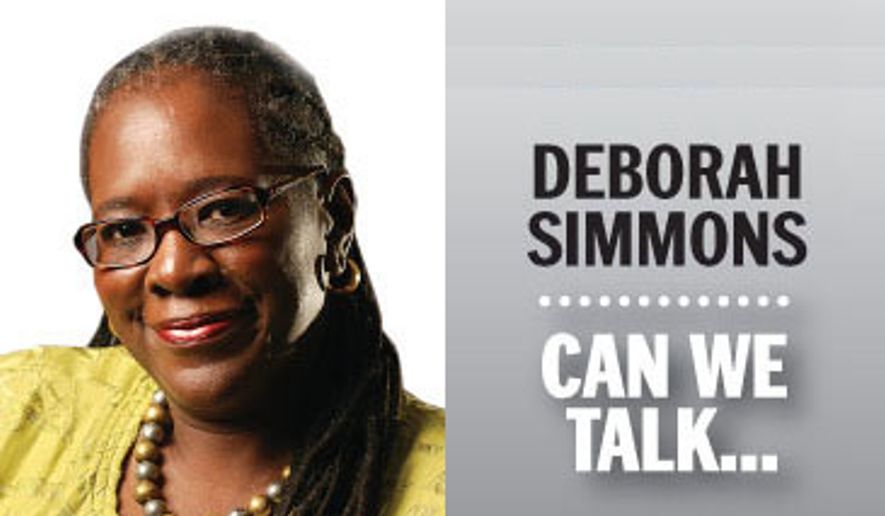ANALYSIS/OPINION:
“I don’t think we need it over here,” said Alphonzo Walker, an unemployed 53-year-old who lives in Ward 8.
“I don’t know about this area,” said Eric Clark, also unemployed and in his 50s, though a few years older than Mr. Walker. “What’s going to happen to the homeless who live there?”
These two men are among the 14.1 percent who are unemployed in Ward 8 according to June statistics, live in Congress Heights, and don’t see anything positive or substantial about the $55 million sports and entertainment proposal that D.C. Mayor Muriel Bowser and NBA mogul Ted Leonsis announced this week — an economic development plan for the east campus of the former St. Elizabeths hospital, like scores of other development plans since D.C. home rule was granted in 1974 that have done very little but left them wanting.
They want jobs.
They want good schools.
They want good housing to raise their families.
They want the mayor and the D.C. Council to look at Ward 8 and point to the East of the Anacostia River as a gateway to middle-class America, a quality of life that was lost after the District won a contrived measure of self-governance in 1974. After home rule, economic development became a hub for fast-food joints, liquor and convenience stores — a black market haven for everything that poor people need to stay away from.
That’s not asking for too much.
Sure, there are bright spots in Ward 8. There’s the potential gleam of a new shopping center at the crossroads that lead to more affluent Ward 7. There are continued prospects because of Camp Simms, the former military firing range and artillery facility whose mixed-use redevelopment includes scores of single-family housing units, retail shops, eateries and a supermarket, which meant the ward was no longer a food desert. And there’s continued hope that fewer concentrations of public housing will turn the corner toward home ownership. And why quality-education-for-all, as they say, remains a sight unseen, one of the brightest spots in Ward 8 is a high-tech charter school.
Their reservations expressed by Mr. Clark and Mr. Walker are to be expected. They’ve heard promises before, which is why Miss Bowser and political newbie, D.C. Council member LaRuby May, will have to reckon with the two jobless baby boomers whose voices will be joined by other D.C. taxpayers asking: What’s in it for me?
Here’s the bill of sale the mayor wants D.C. stakeholders sign up for: to become “co-owners” of a 118-square-foot, 5,000-seat arena for the Mystics and Wizards pro basketball teams by allowing her and the council to approve the plan, whether you like it or not.
The numbers are fairly easy to digest:
• An estimated $50 million up front in public money.
• $15 million from Mr. Leonsis’ Monumental Sports and Entertainment, of which only $5 million will be used for the actual arena — which means taxpayers will be the largest shareholder.
• About 600 construction jobs and 300 permanent positions at the arena.
• Projected future tax revenues of $90 million over 20 years.
Do the math, please: $90 million averaged over 20 years is 4.5 million bucks a year. And a venue that is expected to host 90-plus events a year will become a rundown, aged arena owned by the public after 20 years. Call that situation RFK Stadium redux.
Here again, I’m no fan of publicly owned sports facilities but a huge fan of pro athletes who live, work and play in D.C. And since that’s a pipe dream, I hope that at least D.C. residents get jobs out of the deal.
I don’t mean those phoney baloney job-training programs. I mean real jobs for D.C. residents — as engineering, pipefitting and other construction-related jobs; signage and hi-tech opportunities; janitorial jobs for people who can read the signs that say “Janitors.”
Mr. Clark, like Mr. Walker, used to be employed by the National Park Service, and he asked me how to make sure the D.C. government and the “Wizards guy” give jobs to the people who live in Ward 8.
“Right here, where his employees are going to work,” Mr. Clark said.
I don’t think you can count on D.C. government to do that, I said, adding jokingly, “there’s no more Marion Barry.”
Both men said “right.”
The new girl is “young,” Mr. Clark said, referring to Ms. May, who was sworn in to replace the Ward 8 council seat after Barry died last winter. (Barry, by the way, haggled with the federal government in the 1980s over ownership and costs of the 336-acre St. Elizabeths Hospital.)
Miss May, who worked for Barry, knows Ward 8 like the back of her hand. It’s just not clear whether her voice on the St. Elizabeths project will be on the side of “the least, the lost and the last,” as Barry would often quote from the Bible, or whether she will stand side-by-side with Miss Bowser to deliver the project so the mayor can add it to her Legacy Book.
Miss May could turn to any number of schools in the Congress Heights neighborhood for inspiration from young people, especially Friendship Tech Prep Academy, the promising charter school that sits directly across the street from St. Elizabeths.
If that fails to point Miss May’s politics in the right direction, she can sit with the men and women who sit in the park a block or so from St. Elizabeths. There she also will see young people loitering, walking and hanging around as if “they’re lost,” I said to Mr. Clark.
“They are lost,” Mr. Clark said.
• Deborah Simmons can be reached at dsimmons@washingtontimes.com.
• Deborah Simmons can be reached at dsimmons@washingtontimes.com.




Please read our comment policy before commenting.